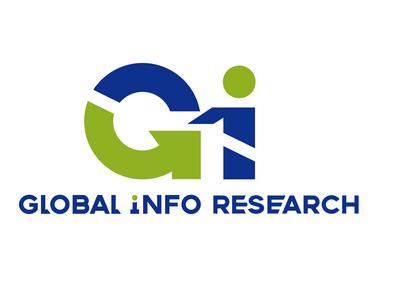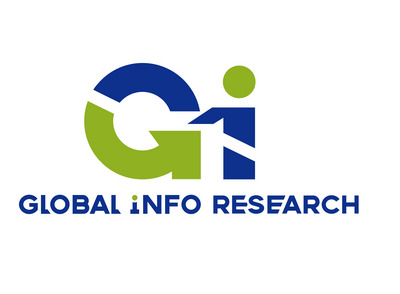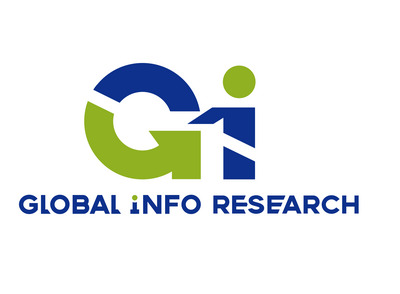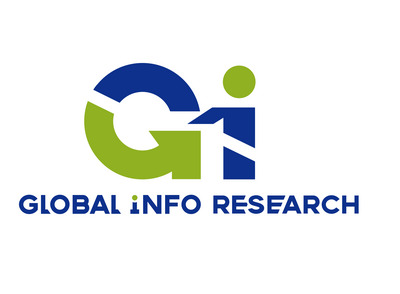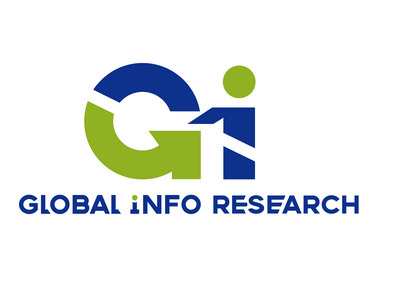
Digital Dissolved Oxygen Sensor Market Share, Revenue, Price, Growth Rate Ranking Analysis Report 2025-2031
Global Info Research‘s report is a detailed and comprehensive analysis for global Digital Dissolved Oxygen Sensor market. Both quantitative and qualitative analyses are presented by manufacturers, by region & country, by Type and by Application. As the Digital Dissolved Oxygen Sensor market is constantly changing, this report explores the competition, supply and demand trends, as well as key factors that contribute to its changing demands across many markets. Company profiles and product examples of selected competitors, along with market share estimates of some of the selected leaders for the year 2025, are provided.
According to our (Global Info Research) latest study, the global Digital Dissolved Oxygen Sensor market size was valued at US$ 1064 million in 2024 and is forecast to a readjusted size of USD 1567 million by 2031 with a CAGR of 5.7% during review period.
In this report, we will assess the current U.S. tariff framework alongside international policy adaptations, analyzing their effects on competitive market structures, regional economic dynamics, and supply chain resilience.
Digital dissolved oxygen sensors are modern optical sensors based on the principle of fluorescence quenching, used to accurately measure dissolved oxygen concentrations in liquids. Their core component is a fluorescent dye film covering the sensor surface. When excited by blue light of a specific wavelength, the dye emits red light. The presence of oxygen molecules quenches this fluorescence effect. The sensor calculates the dissolved oxygen content by measuring changes in fluorescence lifetime or intensity. Compared to traditional polarographic sensors based on Clark electrodes, digital fluorescence sensors offer significant advantages, including near-maintenance freedom, no electrolyte or oxygen consumption, fast response, strong anti-interference capabilities, and long-term stability. Their integrated chip directly outputs a temperature-compensated digital signal, enabling plug-and-play operation and intelligent diagnostics. In 2024, the global digital dissolved oxygen sensor market was expected to have a unit price of US8 per unit, with sales of approximately 1,620,000 units, an average annual production capacity of 50,000-100,000 units per line, and an industry profit margin of 25%-40%.
Regional Landscape
North America and Europe: Traditionally the largest markets, driven by stringent environmental regulations (such as the EU Water Framework Directive), mature industrial process control systems, and strong R&D investment, they have attracted numerous top manufacturers. The Asia-Pacific region: The fastest-growing engine, driven by rapid industrialization in China, India, and Southeast Asian countries, the rapid development of municipal wastewater treatment facilities, and a growing emphasis on environmental monitoring and aquaculture modernization. This region's market share is expected to continue to expand.
Upstream and Downstream Industry Chain Analysis
Upstream: Primarily includes raw material and component suppliers, such as specialty optical components (LED light sources, photodiodes), fluorescent dyes/sensitive membranes, medical-grade silicone/polymer membranes, stainless steel/titanium alloy housings, microprocessor chips, and signal conversion modules. Downstream: End customers across all application areas. Typical customers include municipal wastewater treatment plants, pharmaceutical companies (such as Pfizer and Roche), food and beverage companies (such as Nestlé and Budweiser), chemical companies, environmental monitoring stations, universities and research institutions, intensive aquaculture companies, and water utilities.
Technological Trends and Innovations
First, intelligence and the Internet of Things (IoT): Sensors are evolving from measurement tools to network nodes. Integrated wireless transmission (such as LoRaWAN and NB-IoT), self-diagnostics (membrane life prediction and fouling alarms), remote calibration, and direct data upload to the cloud are the cornerstones of predictive maintenance and smart water management. Second, miniaturization and multi-parameter integration: To accommodate a wider range of application scenarios, sensors are shrinking in size. Furthermore, they are being integrated with sensors for pH, ORP (oxidation-reduction potential), conductivity, and turbidity to create multi-parameter water quality probes, improving data interoperability and deployment efficiency. Third, innovation in materials and algorithms: Developing more stable, fouling-resistant, and long-life fluorescent materials is key. Advanced algorithms are also being used to compensate for the effects of temperature, salinity, and pressure, providing higher measurement accuracy in complex water bodies.
Policy Support
Global policies are a key driver of market development: Environmental regulations: Increasingly stringent wastewater discharge standards and water protection policies (such as China's "Ten Water Regulations") mandate that polluters install online monitoring equipment, directly driving sensor demand. Smart city and infrastructure investment: Government investment in smart water services and new municipal infrastructure is driving the digital upgrade of water treatment plants and pipeline network monitoring. Support for industrial upgrading: Support for strategic emerging industries such as biopharmaceuticals and high-end manufacturing has indirectly promoted the application of high-precision process control sensors.
This report is a detailed and comprehensive analysis for global Digital Dissolved Oxygen Sensor market. Both quantitative and qualitative analyses are presented by manufacturers, by region & country, by Type and by Application. As the market is constantly changing, this report explores the competition, supply and demand trends, as well as key factors that contribute to its changing demands across many markets. Company profiles and product examples of selected competitors, along with market share estimates of some of the selected leaders for the year 2025, are provided.
Market segment by Type: Fluorescence Method、 Polarography Method
Market segment by Application:Municipal and Industrial Wastewater Treatment、 Environmental Monitoring、 Other
Major players covered: Endress Hauser、 Mellter Toledo、 Emerson、 Hamilton Company、 Hach、 ABB、 Xylem、 Yokogawa Electric、 Honeywell、 SWAN、 PONSEL、 ATI、 Badger Meter、 In-Situ Inc.、 PreSens Precision Sensing、 Sensorex、 OTT HydroMet
According to our (Global Info Research) latest study, the global Digital Dissolved Oxygen Sensor market size was valued at US$ 1064 million in 2024 and is forecast to a readjusted size of USD 1567 million by 2031 with a CAGR of 5.7% during review period.
In this report, we will assess the current U.S. tariff framework alongside international policy adaptations, analyzing their effects on competitive market structures, regional economic dynamics, and supply chain resilience.
Digital dissolved oxygen sensors are modern optical sensors based on the principle of fluorescence quenching, used to accurately measure dissolved oxygen concentrations in liquids. Their core component is a fluorescent dye film covering the sensor surface. When excited by blue light of a specific wavelength, the dye emits red light. The presence of oxygen molecules quenches this fluorescence effect. The sensor calculates the dissolved oxygen content by measuring changes in fluorescence lifetime or intensity. Compared to traditional polarographic sensors based on Clark electrodes, digital fluorescence sensors offer significant advantages, including near-maintenance freedom, no electrolyte or oxygen consumption, fast response, strong anti-interference capabilities, and long-term stability. Their integrated chip directly outputs a temperature-compensated digital signal, enabling plug-and-play operation and intelligent diagnostics. In 2024, the global digital dissolved oxygen sensor market was expected to have a unit price of US8 per unit, with sales of approximately 1,620,000 units, an average annual production capacity of 50,000-100,000 units per line, and an industry profit margin of 25%-40%.
Regional Landscape
North America and Europe: Traditionally the largest markets, driven by stringent environmental regulations (such as the EU Water Framework Directive), mature industrial process control systems, and strong R&D investment, they have attracted numerous top manufacturers. The Asia-Pacific region: The fastest-growing engine, driven by rapid industrialization in China, India, and Southeast Asian countries, the rapid development of municipal wastewater treatment facilities, and a growing emphasis on environmental monitoring and aquaculture modernization. This region's market share is expected to continue to expand.
Upstream and Downstream Industry Chain Analysis
Upstream: Primarily includes raw material and component suppliers, such as specialty optical components (LED light sources, photodiodes), fluorescent dyes/sensitive membranes, medical-grade silicone/polymer membranes, stainless steel/titanium alloy housings, microprocessor chips, and signal conversion modules. Downstream: End customers across all application areas. Typical customers include municipal wastewater treatment plants, pharmaceutical companies (such as Pfizer and Roche), food and beverage companies (such as Nestlé and Budweiser), chemical companies, environmental monitoring stations, universities and research institutions, intensive aquaculture companies, and water utilities.
Technological Trends and Innovations
First, intelligence and the Internet of Things (IoT): Sensors are evolving from measurement tools to network nodes. Integrated wireless transmission (such as LoRaWAN and NB-IoT), self-diagnostics (membrane life prediction and fouling alarms), remote calibration, and direct data upload to the cloud are the cornerstones of predictive maintenance and smart water management. Second, miniaturization and multi-parameter integration: To accommodate a wider range of application scenarios, sensors are shrinking in size. Furthermore, they are being integrated with sensors for pH, ORP (oxidation-reduction potential), conductivity, and turbidity to create multi-parameter water quality probes, improving data interoperability and deployment efficiency. Third, innovation in materials and algorithms: Developing more stable, fouling-resistant, and long-life fluorescent materials is key. Advanced algorithms are also being used to compensate for the effects of temperature, salinity, and pressure, providing higher measurement accuracy in complex water bodies.
Policy Support
Global policies are a key driver of market development: Environmental regulations: Increasingly stringent wastewater discharge standards and water protection policies (such as China's "Ten Water Regulations") mandate that polluters install online monitoring equipment, directly driving sensor demand. Smart city and infrastructure investment: Government investment in smart water services and new municipal infrastructure is driving the digital upgrade of water treatment plants and pipeline network monitoring. Support for industrial upgrading: Support for strategic emerging industries such as biopharmaceuticals and high-end manufacturing has indirectly promoted the application of high-precision process control sensors.
This report is a detailed and comprehensive analysis for global Digital Dissolved Oxygen Sensor market. Both quantitative and qualitative analyses are presented by manufacturers, by region & country, by Type and by Application. As the market is constantly changing, this report explores the competition, supply and demand trends, as well as key factors that contribute to its changing demands across many markets. Company profiles and product examples of selected competitors, along with market share estimates of some of the selected leaders for the year 2025, are provided.
Market segment by Type: Fluorescence Method、 Polarography Method
Market segment by Application:Municipal and Industrial Wastewater Treatment、 Environmental Monitoring、 Other
Major players covered: Endress Hauser、 Mellter Toledo、 Emerson、 Hamilton Company、 Hach、 ABB、 Xylem、 Yokogawa Electric、 Honeywell、 SWAN、 PONSEL、 ATI、 Badger Meter、 In-Situ Inc.、 PreSens Precision Sensing、 Sensorex、 OTT HydroMet
To Get More Details About This Study, Please Click Here: https://www.globalinforesearch.com/reports/3050977/digital-dissolved-oxygen-sensor
The overall report focuses on primary sections such as – market segments, market outlook, competitive landscape, and company profiles. The segments provide details in terms of various perspectives such as end-use industry, product or service type, and any other relevant segmentation as per the market’s current scenario which includes various aspects to perform further marketing activity. The market outlook section gives a detailed analysis of market evolution, growth drivers, restraints, opportunities, and challenges, Porter’s 5 Force’s Framework, macroeconomic analysis, value chain analysis and pricing analysis that directly shape the market at present and over the forecasted period. The drivers and restraints cover the internal factors of the market whereas opportunities and challenges are the external factors that are affecting the market. The market outlook section also gives an indication of the trends influencing new business development and investment opportunities.
The Primary Objectives in This Report determine the size of the total market opportunity of global and key countries,assess the growth potential for Digital Dissolved Oxygen Sensor and competitive factors affecting the marketplace,forecast future growth in each product and end-use market. Also,this report profiles key players in the global Digital Dissolved Oxygen Sensor market based on the following parameters - company overview, sales quantity, revenue, price, gross margin, product portfolio, geographical presence, and key developments.
Digital Dissolved Oxygen Sensor market is split by Type and by Application. For the period 2020-2031, the growth among segments provides accurate calculations and forecasts for consumption value by Type, and by Application in terms of volume and value. This analysis can help you expand your business by targeting qualified niche markets.
Market segment by region, regional analysis covers North America (United States, Canada, and Mexico),Europe (Germany, France, United Kingdom, Russia, Italy, and Rest of Europe),Asia-Pacific (China, Japan, Korea, India, Southeast Asia, and Australia),South America (Brazil, Argentina, Colombia, and Rest of South America),Middle East & Africa (Saudi Arabia, UAE, Egypt, South Africa, and Rest of Middle East & Africa).
The report provides insights regarding the lucrative opportunities in the Digital Dissolved Oxygen Sensor Market at the country level. The report also includes a precise cost, segments, trends, region, and commercial development of the major key players globally for the projected period.
The Digital Dissolved Oxygen Sensor Market report comprehensively examines market structure and competitive dynamics. Researching the Digital Dissolved Oxygen Sensor market entails a structured approach beginning with clearly defined objectives and a comprehensive literature review to understand the current landscape. Methodologies involve a mix of primary research through interviews, surveys, and secondary research from industry reports and databases. Sampling strategies ensure representation, while data analysis utilizes statistical and analytical techniques to identify trends, market sizing, and competitive landscapes. Key areas of focus include trend analysis, risk assessment, and forecasting. Findings are synthesized into a detailed report, validated through peer review or expert consultation, and disseminated to stakeholders, with ongoing monitoring to stay abreast of developments.
Global Info Research is a company that digs deep into global industry information to support enterprises with market strategies and in-depth market development analysis reports. We provides market information consulting services in the global region to support enterprise strategic planning and official information reporting, and focuses on customized research, management consulting, IPO consulting, industry chain research, database and top industry services. At the same time, Global Info Research is also a report publisher, a customer and an interest-based suppliers, and is trusted by more than 30,000 companies around the world. We will always carry out all aspects of our business with excellent expertise and experience.
Contact Us:
Global Info Research
Web: https://www.globalinforesearch.com
Email: report@globalinforesearch.com
CN: 0086-176 6505 2062
HK: 00852-58030175
Global Info Research
Web: https://www.globalinforesearch.com
Email: report@globalinforesearch.com
CN: 0086-176 6505 2062
HK: 00852-58030175


